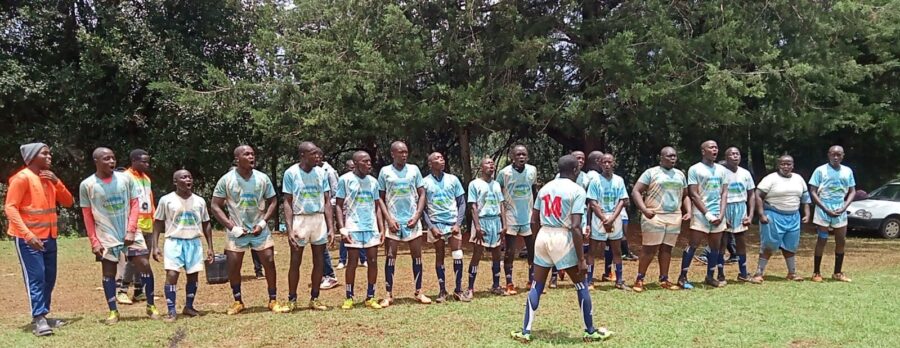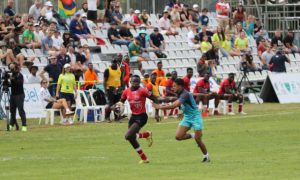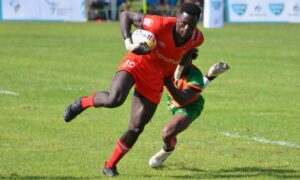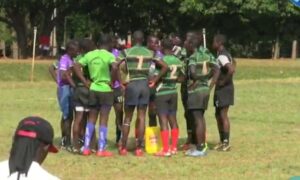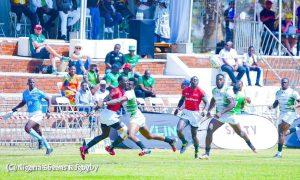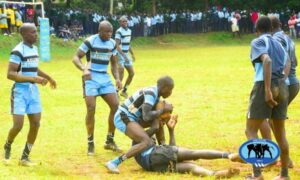This article is written by Upper Hill School coach Powell Gwena and it explores the application of Tactical Periodization in coaching high school rugby, emphasizing its significance in preparing student athletes for peak performance.
The author highlights the crucial role of training in determining the success or failure of a sports season, particularly in the context of thousands of Kenyan teenagers participating in competitive sports.
We will run it in several parts
Abstract
The training of a team is the most crucial factor in determining a successful season or a failure. Every year, thousands of teenagers in Kenya participate in competitive sports at the national and regional level. This is encouraging news because sports activity has the ability to benefit both psychologically and physically young people. Positive consequences from sports engagement, on the other hand, do not happen by accident. The coach must provide an environment and framework in which youngsters can excel in their high school sport and get the rewards of participation. When hiring a coach or a teacher stepping up to manage the team, the school’s hierarchy closely watches how the individual will contribute to the team’s success. Students remember 10 percent of what you say, 50 percent of what they see and 90 percent of what they do. Tactical Periodization is one of the secrets that few know about.
Vitor Frade developed the Tactical Periodization methodology during the 1970s with this concept becoming widely adopted globally. One of the first coaches to implement this method was Jose Mourinho, the football coach, who achieved significant success during his time at FC Porto.
Tactical Periodization has been used successfully by various football clubs and managers. It is interesting to ponder on the nature of football’s welfare when it comes to other sports. I firmly believe that rugby could benefit from some of the elements of football that are already being embraced by the game. With Eddie Jones, the English rugby team’s head coach, implementing this approach into the team’s training in 2017.
Introduction
What is tactical periodization?
Tactical periodization is a training approach used primarily by professional teams that integrates tactical work into all aspects of training. It offers a holistic approach rather than the traditional technique of training each facet of a player’s game (e.g. fitness, ball progression and retention, or abilities) separately. Derived from the study of various sciences and inter-disciplines, including neuroscience, theory of complexity, chaos theory, systems theory, physiology, psychology, fractal geometry, and sociology. (Farias, 2016) (Oliveira G.).
Rugby is regarded holistically when all of these factors are taken into account. For any coach, teacher, or parent, introducing students to the training-to-compete rugby stage and developing their talents can be a highly rewarding experience. To guarantee that every kid has the best chance to attain their full potential through participation and preparation in a safe and secure environment, it is critical to create the optimal learning environment. Young players are the game’s future stewards and will be the next generation’s leaders. This entails taking a comprehensive approach to coaching, which will aid in the development of not only better rugby players but also better people.
Let’s remember that rugby isn’t played by concepts; it’s played by human athletes and that no matter where you lie on the spectrum, between “core skills” and “extreme inventiveness,” you must choose ways that are appropriate for the players you have, which can change from year to year dealing with high-schoolers. Professional teams –clubs and national set-ups – have the luxury of selecting athletes who fit the system, but the great majority of us don’t.
Every training session, according to advocates of tactical periodization, should have four main elements: technical, physical, tactical, and mental. Tactics take precedence because they allow the other aspects to be used effectively. Running quickly demonstrates physical prowess, but it is only advantageous if a team’s tactics enable that player to be in the right place on the pitch at the right time to do that sprint. There are the player qualities needed to play your style of rugby. Then there are team qualities, and then the what-ifs. What if we’re playing against a collision-oriented team? What if they’re playing with two playmakers off the pods? What if they’re using an out-in defence? You can have conversations before the session about someone’s individual journey what they’re working on and how to get better in their role on the team.
As coaches, we should strive to incorporate the how-we-play system/concept into every aspect of practice. Most of us struggle at first to establish routines that effectively manage the increased academic workload and cover for when the student is on a compulsory holiday break away from the team environment. Add to that the commitment that comes on them being student-athletes thus it’s crucial to treat time as our most valuable possession, allocating it cautiously and thoughtfully. You’ve got your team theme, which might be heads-up rugby, but within that, every player has their own things that they’re working on regarding their individual development. Every day on the pitch, that’s what training is about – providing clarity for the group and the individual.
Pre-season is when the biggest changes and challenges can be noticed, with teams no longer focusing solely on strengthening their players’ fitness by having them run a lot without the ball. Players must undertake their high-intensity physical training while improving tactically, according to tactical periodization. Many school teams now take this method, however, some still utilize their time before competition starts “preseason” to focus only on fitness. The ideology does not simply force players to work more physically; it also requires them to work harder intellectually. Tactical periodization divides an athlete’s problem-solving process into three stages: strategy (decision-making), technique (skill execution), and athleticism (movement), all of which are fueled by emotion (mental). It requires athletes to rethink their strategy and place a greater emphasis on how we play.
Understanding Rugby’s Complexity
The rugby environment is an open system with exponentially increasing possibilities that cannot be predicted with 100% certainty. Coaches must prepare their players to succeed in the complex environment because rugby is mostly played there. Instead of a limited structure, this is accomplished by incorporating practice programs that allow for mistakes in the development of principles of play. It’s mostly chaotic, and while it’s become more structured in recent years, with set piece maneuvers creeping into open play and prescribed plans eating up a lot of time, it doesn’t have to be. At the school level, when defenses aren’t as strong, anticipation and reading of the situation are all that’s required – if athletes are given the opportunity to practice this.
The traditional way of training separating the game’s dimensions does not follow the game’s logical order and does not provide players with the best learning and training methodology. Teaching the players how to deal with chaotic situations is critical to building a strong team in order for them to be able to deal with the complexities of games as they evolve in any given fixture or season, creating as many environments and scenarios as possible to make it almost as chaotic as possible so that they learn comfortably coping with a variety of scenarios. Rugby is a naturally chaotic sport.
Taking into account the game’s complexity and attempting to mimic its chaotic character does not imply that we just practice 15v15 matches every session. We don’t have to make it as highpressure as the game, but we can still train with certain constraints that allow players to experience pressure and build anticipation / reading abilities in realistic rugby situations. As coaches, there are times when we need to simplify components of the game so that players may better comprehend how to handle certain game circumstances. When we simplify, however, we make certain that we don’t lose crucial aspects of the game, such as its chaotic character. Otherwise, we are training in a way that is unrelated to the realities of the game.
Rugby is a fast-paced sport that needs players to perform a wide range of tasks – including maybe the entire range of rugby skills – every few minutes. The top players are able to predict play and respond swiftly to opportunities/threats, and they’ve done so in circumstances that allow them to experiment and find solutions that work for them. This can happen even with students and beginners if the activity’s parameters are appropriate for their needs. Instead of giving them procedures to follow and heavy instructions on ‘the ideal’ way to execute techniques, which aren’t as likely to hold up under pressure and risk denying athletes a true understanding of the game because they only have to do what they’re told.
We employ the fractal theory when we need to focus on smaller principles of play and a smaller team scale. To establish the essential game circumstance, we decrease key elements without impoverishing it (Frade in Oliveira R. 2014). The amount of players, playing area, interval duration, rest time between intervals, and how we score tries are all variables that can be reduced. However, we must always preserve the game’s chaotic and complex nature, as well as the objective, decision-making, intensity, and significance of every session on how we play.
The more situations in which something is taught, the more abstract models the student develops and the less they rely on specific examples. Students improve their ability to adapt their knowledge to new situations, which is the essence of creativity.
Watch out for part two which deals with Tactical Periodization Matrixes


